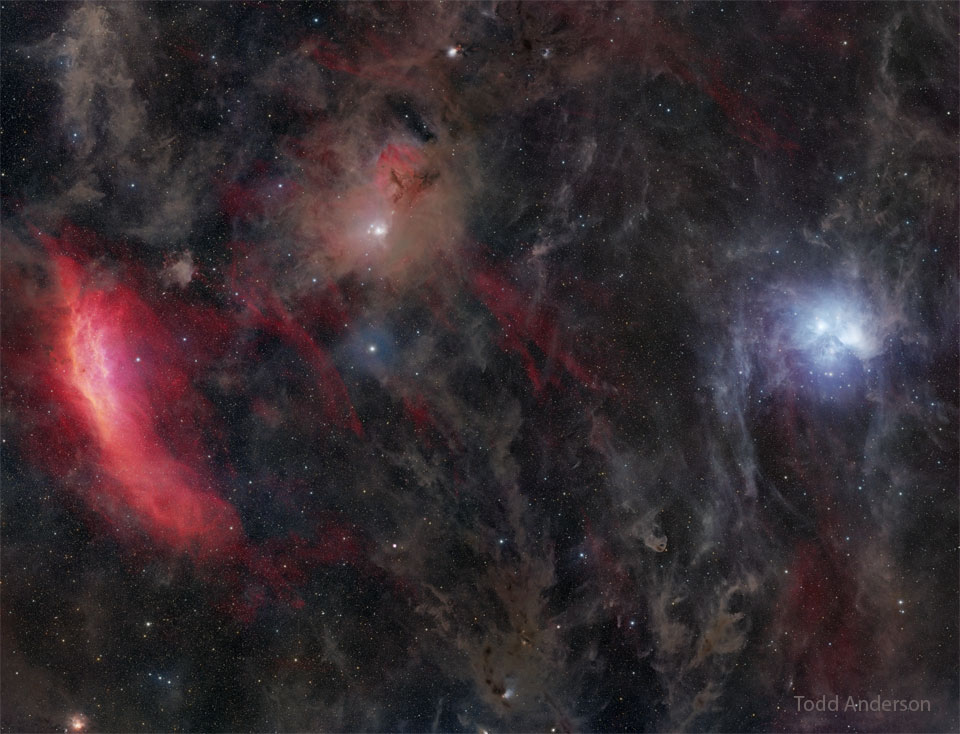Nombre total de pages vues
06/03/2025
SANTé/MEDECINE - Les autres signes qui accompagnent le râle agonique
ASTRONOMY - Starburst Galaxy Messier 94
2025 March 6
Image Credit: ESA/Hubble and NASA
Explanation: Beautiful island universe Messier 94 lies a mere 15 million light-years distant in the northern constellation of the hunting dogs, Canes Venatici. A popular target for earth-based astronomers, the face-on spiral galaxy is about 30,000 light-years across, with spiral arms sweeping through the outskirts of its broad disk. But this Hubble Space Telescope field of view spans about 7,000 light-years or so across M94's central region. The sharp close-up examines the galaxy's compact, bright nucleus and prominent inner dust lanes, surrounded by a remarkable bluish ring of young, massive stars. The massive stars in the ring appear to be less than about 10 million years old, indicating the galaxy experienced a corresponding well-defined era of rapid star formation. As a result, while the small, bright nucleus is typical of the Seyfert class of active galaxies, M94 is also known as a starburst galaxy. Because M94 is relatively nearby, astronomers can explore in detail reasons for the galaxy's burst of star formation.
05/03/2025
ORNITHOLOGIE - Araçari à collier : la star des petits toucans
ASTRONOMY - Seven Sisters versus California
2025 March 5
Image Credit & Copyright: Todd Anderson
Explanation: On the right, dressed in blue, is the Pleiades. Also known as the Seven Sisters and M45, the Pleiades is one of the brightest and most easily visible open clusters on the sky. The Pleiades contains over 3,000 stars, is about 400 light years away, and only 13 light years across. Surrounding the stars is a spectacular blue reflection nebula made of fine dust. A common legend is that one of the brighter stars faded since the cluster was named. On the left, shining in red, is the California Nebula. Named for its shape, the California Nebula is much dimmer and hence harder to see than the Pleiades. Also known as NGC 1499, this mass of red glowing hydrogen gas is about 1,500 light years away. Although about 25 full moons could fit between them, the featured wide angle, deep field image composite has captured them both. A careful inspection of the deep image will also reveal the star forming region IC 348 and the molecular cloud LBN 777 (the Baby Eagle Nebula).
04/03/2025
ARCHEOLOGIE - Les gardiens de Toutânkhamon
SANTé/MEDECINE - Combien de temps une personne vit-elle après l’apparition du râle agonique ?
ASTRONOMY - A Quadruple Alignment over Italy
2025 March 4
Image Credit & Copyright: Valerio Minato
Explanation: Why does this Moon look so unusual? A key reason is its vivid red color. The color is caused by the deflection of blue light by Earth's atmosphere -- the same reason that the daytime sky appears blue. The Moon also appears unusually distorted. Its strange structuring is an optical effect arising from layers in the Earth's atmosphere that refract light differently due to sudden differences in temperature or pressure. A third reason the Moon looks so unusual is that there is, by chance, an airplane flying in front. The featured picturesque gibbous Moon was captured about two weeks ago above Turin, Italy. Our familiar hovering sky orb was part of an unusual quadruple alignment that included two historic ground structures: the Sacra di San Michele on the near hill and Basilica of Superga just beyond.
03/03/2025
ASTRONOMY - Blue Ghost on the Moon
Image Credit: Firefly Aerospace
Explanation: There's a new lander on the Moon. Yesterday Firefly Aerospace's Blue Ghost executed the first-ever successful commercial lunar landing. During its planned 60-day mission, Blue Ghost will deploy several NASA-commissioned scientific instruments, including PlanetVac which captures lunar dust after creating a small whirlwind of gas. Blue Ghost will also host the telescope LEXI that captures X-ray images of the Earth's magnetosphere. LEXI data should enable a better understanding of how Earth's magnetic field protects the Earth from the Sun's wind and flares. Pictured, the shadow of the Blue Ghost lander is visible on the cratered lunar surface, while the glowing orb of the planet Earth hovers just over the horizon. Goals for future robotic Blue Ghost landers include supporting lunar astronauts in NASA's Artemis program, with Artemis III currently scheduled to land humans back on the Moon in 2027.
02/03/2025
ARCHEOLOGIE - Le trésor de Toutânkhamon - Est-ce vraiment le visage de Toutânkhamon ?
POLYCHROMIE - La couleur et ses mystères
La couleur est partout. Ici des maisons typiques très colorées à Burano, en Italie. © Alexandre Poncet, CC by-nc 2.0 De nombreux produits et...

-
2022 September 26 All the Water on Planet Earth Illustration Credit: Jack Cook, Adam Nieman, Woods Hole Oceanographic Institution ; Data ...
-
2025 May 11 The Surface of Venus from Venera 14 Image Credit: Soviet Planetary Exploration Program , Venera 14 ; Processing & Copyri...








